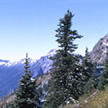| Report Documents
|
|
|
| |
| Map Plotfiles
|
|
|
| |
| Data Files
|
|
|
| |
| Digital Map Files
|
|
|
| |
| Image Document
|
|
|
| |
| Video Files
|
-
No files of this type available
|
| |
|
All Documents
|
|
|
| Contact
|
|
-
If you have any questions on the information presented, or require additional report data or attachments, please contact the Report Contact
|
|
|
BC Parks developed a model that independently rates marine and terrestrial segments of the British Columbia coastline according to their sensitivity to sea level rise, then spatially combines the ratings to build a map of relative shoreline sensitivity.
|
Author: Biffard, D.; Stevens, T.; Rao, A.; Woods, B.
|
|
|
Date Published: Jun 2014
|
Report ID: 42825
|
Audience: Government and Public
|
One of the first accurate measures of climate change effects is the relative level of oceans along coastline. It is clear that global relative sea level has increased over the last century and rate of rise is now accelerating. Traditional management approaches assume that many shoreline features are static and enduring. New information is needed to inform a revised approach that recognizes the importance of adapting to changing conditions, for example rising sea level. Managers, planners and others require knowledge of the relative sensitivity of shorelines to sea level rise to develop an appropriate set of adaptation and mitigation responses.
Ratings were developed using an existing biogeographic land classification dataset (Broad Ecosystem Inventory), and previously rated sensitivity of coastal and marine feature classes (ShoreZone), modified to account for the effects of slope, exposure and sediment mobility. Examples are provided of how the model may be used by both technical and non-technical users. Model prepared by Doug Biffard and Tory Stevens, PhD, R.P.BIO. User Guide prepared by Anuradha S. Rao, M.Sc., R.P. Bio. GIS analysis conducted by Byron Woods, MOE and Nolan Porther, Vancouver Island University
The word document is the guide that explains the model and has examples on how to use it. The shape files are the model by area and the KML files allow the model to be displayed on Google Earth. Note: If using GIS, due to size, the dbf file is not included in the zipped GIS shape file. For GIS, download the zip file and the dbf and next move the dbf file to the same folder as the unzipped file once it is expanded.
|
Report Type
Subject
| |
Parks - Natural Park Information |
| |
Region - Province Wide |
| |
Terrestrial Information - Broad Ecosystem Inventory (BEI) |
| |
|
|
